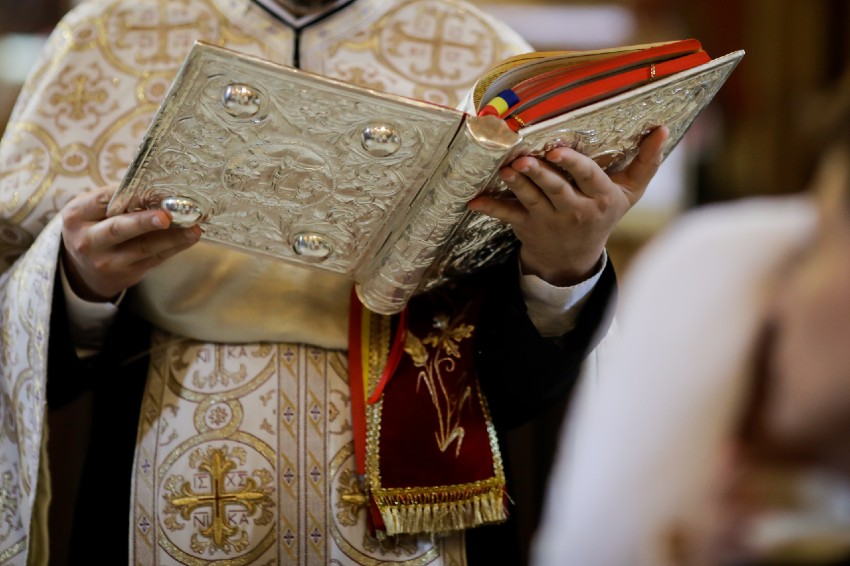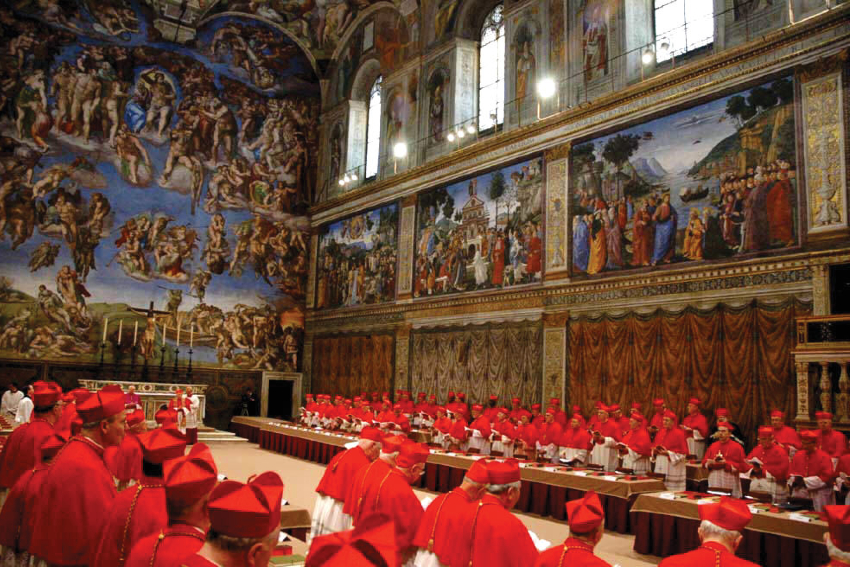June 25, 2015, Thursday — What Pope Francis Suffered as a Child
“But do we still know what a wound to the soul is? Do we feel the weight of the mountain that crushes the soul of a child, in families in which the members treat each other badly?” —Pope Francis, yesterday in St. Peter’s Square during his remarks at his Wednesday General Audience
How the Pope’s Own Childhood Affected Him Deeply

But today comes news that helps explain the Pope’s reason for focusing so much of his attention on the wounds children suffer when families fight and divide.
It is because he himself suffered deeply as a child in Buenos Aires from divisions in his own family — not in his immediate family, but among his uncles and cousins — which he came to know about and which caused him great anguish.
We know this because the Pope wrote this himself.
The Pope revealed this in a personal letter he wrote some time ago to a Brazilian priest and Mariologist, Father Alexandre Awi, who had served as his translator at World Youth Day in July 2013. The Pope was writing Awi to thank him for an article the priest had written about the Pope’s “culture of encounter” as a way to solve human problems, overcome distrust, and heal divisions.
In this letter, the Pope reveals that he developed this “culture of encounter” after suffering anguish as a child, due to conflicts and divisions in his extended family.
Visiting Chile in April, Father Awi told the Catholic journal Portaluz that the Pope had written him a personal letter to thank him for the article he had written on the “culture of encounter” which characterizes this Pope’s teaching and pontificate, and has been a central part of his catechetical vision since the document of the Latin American bishops at Aparecida in 2007, and even before.
In his letter, the Pope told Awi that this commitment to a “culture of encounter” had its roots in his own personal experiences as a child.
The first publication of this private letter came on June 4, three weeks ago, in Portaluz (for the entire text of this story, see below, with a link to the source).
Now the story of the Pope’s letter will be reaching a wider audience, since it was picked up this morning by the influential Vatican news aggregator Il Sismografo, which is read by nearly every “Vaticanist.”
Il Sismografo notes that on June 19 Aleteia covered the story in a second Spanish version (link), and then again on June 24 in a French version (link).
As far as I know, this story has not yet appeared anywhere in English.
A painful family quarrel
Here is what the Pope wrote to Father Awi:
“Thank you for your article on the ‘culture of encounter.’ Regarding this expression, I must tell you something. During the restoration of the facade of the Buenos Aires Cathedral, the choice was made to copy the facade of the church of the Madeleine in Paris (which had nothing to do with the baroque style of the building), and as it was at the time the national reorganization and we wanted the unity of the nation, it was decided to sculpt on the frontispiece the scene of Joseph’s encounter with his brothers. This image struck me greatly, in part, I think, because of my family history and in large measure due to God’s grace.
“In my family, there was a long history of disagreements and quarrels. Uncles and cousins, quarreled and separated. As a child, when one of these fights was discussed or when we could see a new incident was about to take place, I cried a great deal, in secret, and sometimes I offered a sacrifice or a penance so that such events might not occur. I was very affected. Thank God, at home, Dad, Mom and my five siblings lived in peace. But these events left a deep mark on me in my childhood and created a desire in my heart for people to not fight, to remain united. And if they fight, that they return to better feelings.
“I have reread what I wrote and I feel a little embarrassment, but I think that in this story, there is, as it were, the seed of that which, over the years and in a conceptual way, I came to call ‘the culture of encounter.’ It’s a feeling of anxiety that has never left me since I was little.”
Here is a link to the original June 4 Portaluz story in Spanish, and here also is the full text from that link below, for those who read Spanish, or wish to have the exact original text of the Pope’s words (there is a video of the Brazilian priest reading the letter he received from the Pope, at this link; he reads the letter from about 14:30 minutes to about 17 minutes of the video):
Inédita revelación
Una traumática experiencia padecida por Papa Francisco en su infancia, lo mueve a la “Cultura del Encuentro”
El Pontífice confidencia el por qué… “Es un ansia que llevo desde chico”.
Actualizado 5 junio 2015
El sacerdote y destacado mariólogo brasileño Alexandre Awi, no solo compartió sus valiosas reflexiones sobre el Pontificado de Papa Francisco en la entrevista concedida a Portaluz, cuando visitó Chile el pasado mes de abril. También confidenció una inédita y emotiva vivencia del Papa, que hoy publicamos pues incorpora ‘humanidad’ a la persona del Santo Padre y devela la riqueza espiritual que desde la infancia forjó el alma de quien es hoy el Vicario de Cristo.
Cuenta Alexandre que nada mas terminada la JMJ Río2013 en la que ofició de traductor y secretario del Santo Padre, escribió para una revista salesiana de Brasil un artículo sobre la “cultura del encuentro”; comentando la riqueza pastoral, espiritual y otras que en su parecer el Papa ofrece al mundo con esa propuesta.
Ya en el documento de Aparecida y mucho antes el Vicario de Cristo se refería a esta cuestión, que ha sido un eje temático en las catequesis de su Pontificado. Pero lo que Awi desconocía es que el anhelo de una ‘cultura del encuentro’ estaba profundamente arraigado en las experiencias que como niño vivió Jorge Mario Bergoglio, hoy Papa Francisco.
Sería el propio Pontífice, quien se lo confidenciaría a padre Alexandre en una carta donde le agradece el referido artículo:
“Gracias por el artículo sobre la cultura del encuentro. Creo que te debo contar algo de esa expresión. Cuando se rehízo el frente en la catedral de Buenos Aires optaron por copiar el frente de la Madeleine de París (no pega ni con cola con el estilo barroco del templo) y como era el tiempo de la reorganización nacional y se buscaba la unidad de la nación, optaron por esculpir en el frontispicio la escena del encuentro de José con sus hermanos. Esa imagen me llegó hondo. Creo que en parte debido a mi historia de familia y en gran parte por la Gracia de Dios.
“En mi familia hubo una larga historia de desencuentros. Tíos, primos, peleados y separados. Cuando se comentaba algún caso de estos o se pre-anunciaba alguna pelea, de chico lloraba mucho, a escondidas y a veces ofrecía algún sacrificio o alguna penitencia, para que no sucedieran estas cosas. Me lastimaba mucho. Gracias a Dios que en casa Papá, Mamá y los cinco hermanos vivíamos en paz.
“Creo que esta historia de chico me marcó mucho y fue creando en mi corazón ganas de que la gente no se pelee, que siga unida. Y si se pelean que se amiguen.
“Releo lo que escribí y me da un poco de vergüenza, pero creo que en esta historia hay como un germen de lo que con los años y de un modo conceptual llamé ‘Cultura del encuentro.’ Es un ansia que llevo desde chico.”
(Vea a padre Alexandre leyendo la carta enviada por Papa Francisco en el minuto 14 del siguiente video: Pulse aquí)
Note: For those who would like to travel with us on pilgrimage:
(1) In mid-July 2015, we will travel with a small group of Inside the Vatican readers on our annual “Urbi et Orbi” pilgrimage to Russia, Turkey and the Vatican, to visit eastern Orthodox leaders, shrines and monasteries, and to talk with Vatican officials about ecumenical relations between Catholics and Orthodox;
(2) On December 8, 2015, and again on November 20, 2016, we will be gathering in Rome to be present when Pope Francis opens the Holy Door to begin his Special Jubilee of Mercy, and when he closes the door to end the Jubilee Year. If you would like to join us on one or more of these pilgrimages, email now for more information…
We also often travel to Norcia, in central Italy, where there is a flourishing Benedictine monastery we visit.
We keep all of these pilgrimages small. Please contact us if you would like your name to be placed on a waiting list, to hold your spot.
Also, if you have not yet subscribed to the magazine, please do so now. Every subscriber is important to us. To subscribe, click here:
What is the glory of God?
“The glory of God is man alive; but the life of man is the vision of God.” —St. Irenaeus of Lyons, in the territory of France, in his great work Against All Heresies, written c. 180 A.D.







Facebook Comments